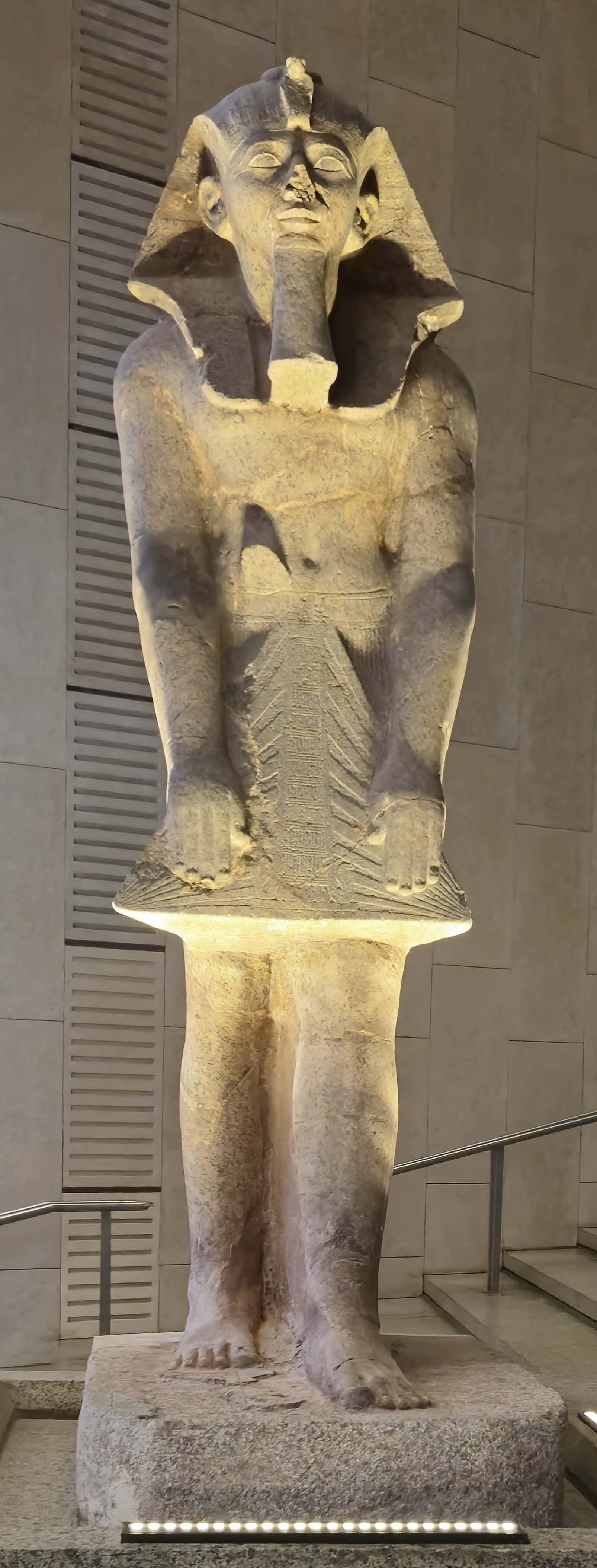
GEM 2205
Colossal Statue of Queen Hatshepsut
Amid the grandeur of ancient Thebes, nestled in the heart of Deir el-Bahari, stands one of the most remarkable legacies of Egypt’s New Kingdom: a colossal statue of Queen Hatshepsut—one of the very few women in ancient Egypt to assume the full powers of a pharaoh. This statue, originally part of her mortuary temple, is not merely a monument to royal authority—it is a bold political statement carved in stone.
Hatshepsut ruled during the 18th Dynasty (c. 1473–1458 BCE), a time of prosperity, peace, and architectural innovation. Initially serving as regent for her young stepson, Thutmose III, Hatshepsut soon declared herself pharaoh in her own right. She adopted all the trappings of kingship: the royal kilt, false beard, and even masculine pronouns in inscriptions—yet always preserved her identity as a female ruler. The statue reflects this unique duality. Despite the traditional masculine form of pharaohs seen in the sculpture’s pose and dress, there is a subtle softness in the facial features, combined with the elegant smile and refined expression that hint at her individuality.
In this statue, the queen is shown seated with her hands flat on her knees—an iconographic pose used in formal representations of royalty. The figure likely once flanked the grand causeway of her mortuary temple, designed by her steward and architect Senenmut, which still rises majestically against the cliffs of western Thebes. The temple, known as Djeser-Djeseru (“Holy of Holies”), remains one of the architectural masterpieces of ancient Egypt.
This sculpture may be one of the later statues from her reign, reflecting an increasing confidence in her role as pharaoh. While earlier depictions of Hatshepsut sometimes portrayed her with a female form and costume, this statue exemplifies the full transition into masculine regalia—symbolizing her complete integration into the royal institution.
Under Hatshepsut’s leadership, Egypt witnessed not only political stability but also the revival of international trade. One of her most famous achievements was the expedition to the Land of Punt, believed to be in the Horn of Africa. The voyage brought back exotic goods such as incense trees, gold, ivory, and rare animals—items that were displayed in reliefs at her mortuary temple.
Despite attempts by later rulers—most notably Thutmose III—to erase her from historical memory by defacing or destroying her statues and inscriptions, Hatshepsut’s image endures. Many of her statues were buried rather than destroyed, and their rediscovery has allowed modern historians to reconstruct her story and appreciate her role as a visionary female monarch in a male-dominated world.
This colossal statue is more than a representation of a queen—it is a testament to Hatshepsut’s boldness, political genius, and architectural legacy. Through art, she reshaped the expectations of royal power and left a mark that continues to captivate the world thousands of years later.
Looking For Another Artifact ?